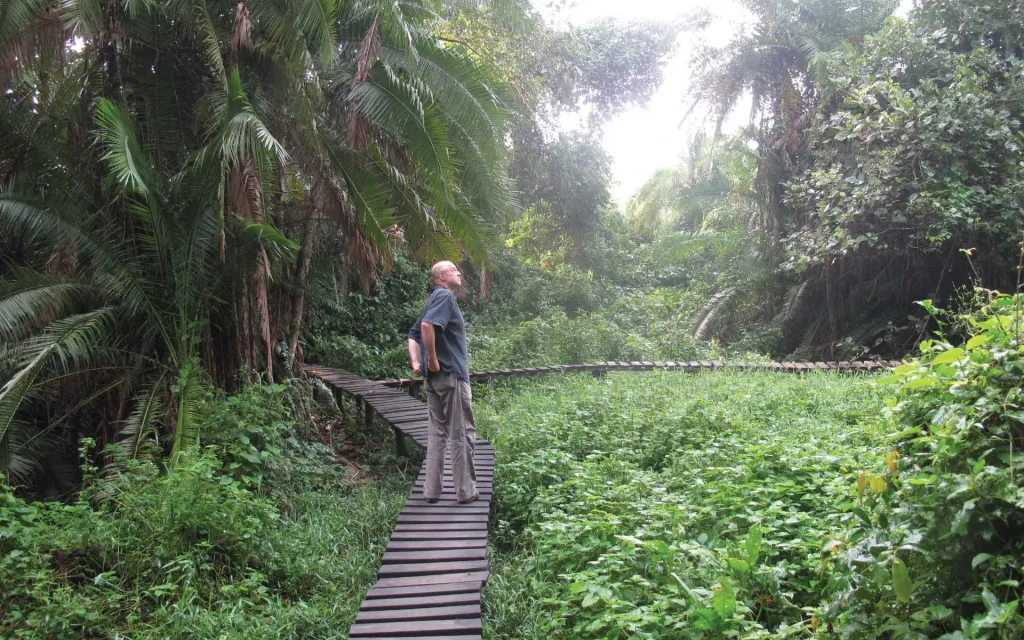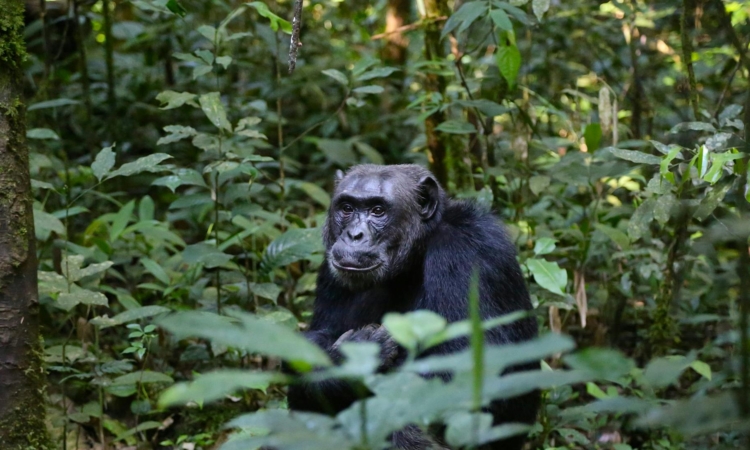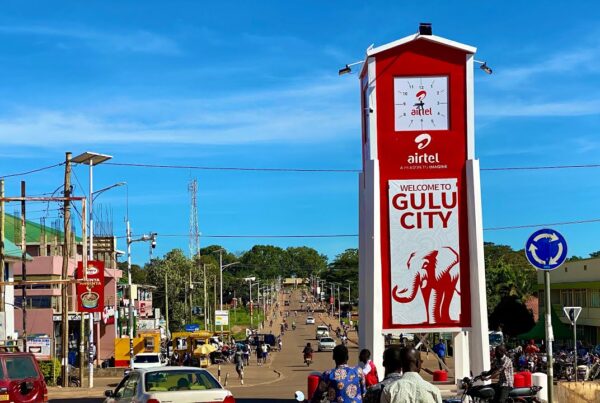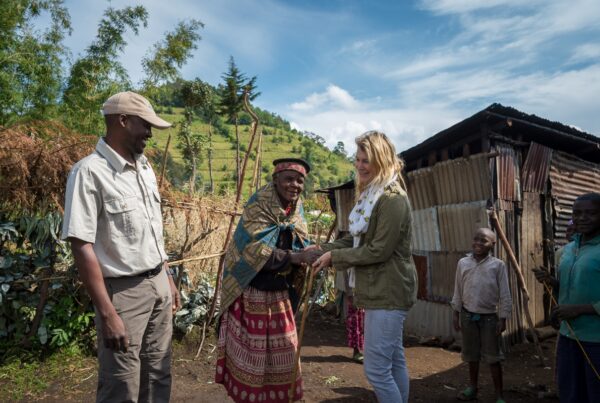Conservation Efforts in Kibale National Park
Preserving Uganda’s Tropical Treasure
Kibale National Park, located in western Uganda, represents one of the country’s most biodiverse and ecologically significant forests. Spanning approximately 795 square kilometers, the park is renowned for its high primate density, particularly chimpanzees, and its vibrant avian population exceeding 370 species. Beyond its ecological value, Kibale serves as a critical site for scientific research, environmental education, and eco-tourism, making conservation a central component of its management strategy.
Conservation in Kibale is not merely about preserving charismatic species; it encompasses a holistic approach that integrates habitat protection, species monitoring, community engagement, and sustainable tourism. The park’s preservation has been the result of decades of strategic interventions, collaborative partnerships, and rigorous enforcement of environmental policies. These efforts ensure that both wildlife and local communities benefit from the forest’s rich resources, establishing Kibale as a model for integrated conservation and sustainable development.
This article explores the various conservation efforts in Kibale National Park, including wildlife protection, habitat management, anti-poaching strategies, community engagement, research initiatives, and the role of tourism in supporting sustainable preservation. The discussion underscores the park’s significance as a living laboratory for conservation science and as a premier destination for ecologically responsible tourism.
Wildlife Protection in Kibale
Chimpanzee Conservation
Chimpanzees are the flagship species of Kibale National Park and a primary focus of conservation efforts. With populations exceeding 1,500 individuals, they are among the most studied primates in Africa. Conservation strategies have been designed to prevent poaching, reduce human-wildlife conflict, and ensure sustainable population growth.
Habituation programs, initiated in collaboration with research institutions, allow selected chimpanzee groups to be observed by researchers and tourists. These programs are conducted with strict guidelines to minimize stress and disease transmission, providing valuable data on behavior, social dynamics, and ecological interactions. Chimpanzee monitoring has informed conservation policies, guiding habitat management and anti-poaching patrols, while also supporting education and awareness programs for local communities and international audiences.
Protection of Other Primate Species
Beyond chimpanzees, Kibale is home to 12 other primate species, including red-tailed monkeys, black-and-white colobus, L’Hoest’s monkeys, and olive baboons. Conservation initiatives focus on maintaining population diversity, monitoring health and reproductive patterns, and ensuring connectivity between forest patches. Research on these species contributes to understanding forest ecology, interspecies interactions, and the broader conservation needs of primate communities.
Avian and Small Mammal Protection
Birds and small mammals also play a crucial role in Kibale’s ecological balance. Over 370 bird species inhabit the park, ranging from canopy dwellers to wetland specialists. Conservation efforts include habitat preservation, monitoring of migratory patterns, and mitigation of threats such as deforestation and hunting. Small mammals, including rodents, civets, and nocturnal primates, are protected through habitat management, anti-poaching patrols, and research on their ecological roles, emphasizing the interconnectedness of all species within the forest ecosystem.
Habitat Management
Forest Preservation
The preservation of Kibale’s tropical rainforest is central to conservation efforts. Strategies include control of invasive species, reforestation programs, and protection of riparian zones, ensuring the integrity of the ecosystem. Forest health is monitored through satellite imagery, ground surveys, and ecological assessments, enabling timely intervention in cases of habitat degradation.
Water and Wetland Protection
Kibale contains several rivers, streams, and swamps that are critical for both wildlife and human communities. Conservation measures focus on preventing pollution, maintaining water quality, and preserving natural flow regimes. Riparian zones are protected through reforestation, erosion control, and community education initiatives, ensuring that both aquatic and terrestrial species benefit from healthy water systems.
Fire and Human Impact Mitigation
Fire, both natural and human-induced, poses a threat to forest integrity. Management practices include firebreaks, controlled burns in specific zones, and rapid response teams. Local communities are educated on the ecological risks of uncontrolled burning, promoting a culture of responsible resource use. Efforts to reduce human impact also include regulating tourism, controlling logging, and preventing illegal harvesting of forest products.
Anti-Poaching Strategies
Patrols and Surveillance
Anti-poaching patrols are a cornerstone of conservation in Kibale. Rangers conduct regular ground patrols, monitor known poaching hotspots, and utilize intelligence networks to intercept illegal activities. Patrol teams are trained in wildlife monitoring, law enforcement, and emergency response, ensuring effective protection for vulnerable species.
Community-Based Reporting
Local communities are engaged as key partners in anti-poaching initiatives. Mechanisms such as community informants, reporting hotlines, and incentive programs encourage residents to participate in wildlife protection. By fostering local stewardship, poaching is reduced, and the park benefits from additional eyes and knowledge on the ground, enhancing overall surveillance capacity.
Legal Framework and Enforcement
Conservation in Kibale is supported by robust legal frameworks, including national wildlife laws and international agreements. Enforcement mechanisms involve arrest, prosecution, and fines for offenders, reinforcing the message that wildlife crimes are taken seriously. The legal infrastructure is complemented by education and outreach programs, ensuring that both locals and visitors understand regulations and their importance for long-term preservation.
Community Engagement and Sustainable Development
Alternative Livelihood Programs
Recognizing that local communities rely on forest resources for survival, conservation initiatives include alternative livelihood programs. These programs support activities such as beekeeping, sustainable agriculture, eco-tourism, and craft production, reducing pressure on the forest while generating income for residents.
Environmental Education
Education initiatives are conducted in schools, community centers, and through outreach programs. Children and adults are taught about biodiversity, ecosystem services, and the importance of conservation, fostering a sense of ownership and responsibility for the park’s resources. Interactive programs, workshops, and guided visits enhance understanding and encourage long-term behavioral change.
Collaborative Management
Conservation in Kibale is strengthened through partnerships between government agencies, non-governmental organizations, research institutions, and local communities. Collaborative management ensures that decisions are informed by ecological data, community needs, and sustainable development principles, resulting in inclusive and effective conservation strategies.
Research and Scientific Contributions
Long-Term Ecological Studies
Kibale is a hub for scientific research, providing data on primate behavior, forest ecology, and climate interactions. Long-term studies allow for monitoring of population trends, habitat use, and the impacts of human activity, informing both local management and global conservation policy.
Disease Monitoring and Health Studies
Monitoring the health of wildlife populations, particularly chimpanzees, is critical. Studies focus on disease prevention, zoonotic risks, and nutritional ecology, ensuring that conservation practices safeguard both animal and human health. Research findings contribute to global understanding of primate biology and inform management practices across African forests.
Capacity Building and Training
Kibale serves as a training ground for ecologists, conservationists, and park managers. Field schools, internships, and workshops develop local and international expertise, building capacity for future conservation initiatives. Knowledge transfer ensures that conservation efforts are sustainable and continually refined based on scientific evidence.
Role of Tourism in Conservation
Eco-Tourism as a Revenue Source
Tourism in Kibale generates essential revenue that supports park management, community programs, and wildlife protection. Activities such as chimpanzee tracking, birdwatching, night walks, and cultural visits provide income while promoting awareness of the park’s ecological value. Revenue is reinvested into ranger salaries, infrastructure, research, and community development, creating a positive feedback loop that benefits both people and wildlife.
Ethical Tourism Practices
Conservation in Kibale is reinforced by promoting ethical tourism. Guidelines ensure that visitor activities minimize disturbance to wildlife, adhere to park regulations, and contribute positively to local communities. Tour operators, guides, and lodges collaborate with park authorities to maintain sustainable tourism standards, demonstrating that recreation and conservation can coexist effectively.
Photography and Awareness
Photographers and filmmakers play a critical role in conservation by documenting species, habitats, and ecological challenges. Visual media raise awareness, inspire support, and provide evidence for advocacy and policy-making. Kibale’s landscapes, primates, and birdlife offer compelling material that underscores the importance of forest preservation.
Challenges and Future Directions
Human-Wildlife Conflict
As communities expand near the park boundary, human-wildlife conflict presents a persistent challenge. Crop raiding, livestock predation, and resource competition necessitate conflict mitigation strategies, including buffer zones, deterrents, and community education. Addressing these conflicts is essential to maintaining local support for conservation efforts.
Climate Change and Habitat Pressure
Changing climatic conditions affect forest health, water availability, and species distribution. Conservation efforts must adapt to increasing temperatures, altered rainfall patterns, and invasive species, ensuring that management strategies remain resilient and evidence-based.
Long-Term Sustainability
Sustaining conservation success requires continued investment in research, community engagement, law enforcement, and tourism management. Collaborative partnerships, adaptive management, and policy advocacy will ensure that Kibale remains a vibrant sanctuary for biodiversity while supporting human development and education.
A Model of Integrated Conservation
Kibale National Park exemplifies holistic conservation, integrating wildlife protection, habitat management, community engagement, scientific research, and sustainable tourism. From the protection of chimpanzees and other primates to the preservation of tropical forests and water systems, the park demonstrates that biodiversity and human livelihoods can coexist when managed responsibly.
For travelers and conservation-minded visitors, experiences in Kibale are enriched by the knowledge that tourism supports ongoing preservation initiatives, contributes to local communities, and fosters global awareness of tropical forest ecosystems. For those seeking a professionally guided, ethically responsible, and immersive experience in Kibale, it is recommended that tours and safari arrangements be made through WildHorn Africa. Their expertise ensures access to high-quality experiences, knowledgeable guides, and seamless logistics, transforming a visit to Kibale National Park into a comprehensive exploration of Uganda’s ecological and cultural wealth while supporting long-term conservation efforts.





 WildHorn Africa – Authentic and unforgettable tours across Africa, guided by local experts who know the land, wildlife, and culture best.
WildHorn Africa – Authentic and unforgettable tours across Africa, guided by local experts who know the land, wildlife, and culture best.


